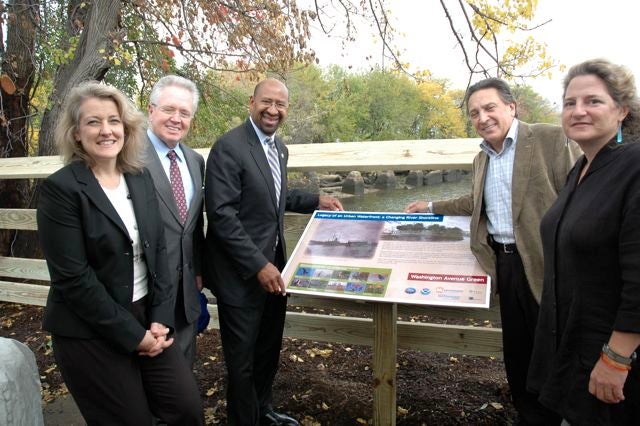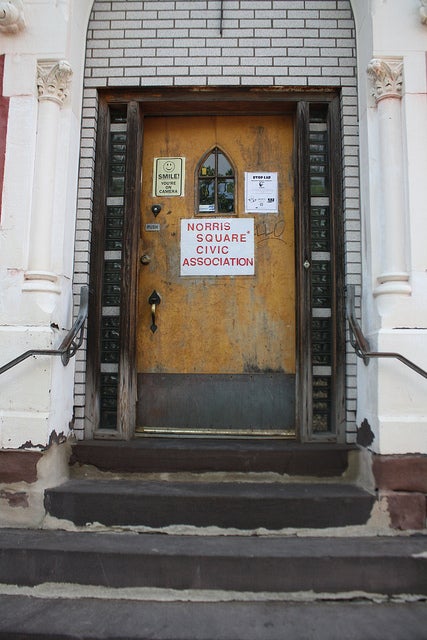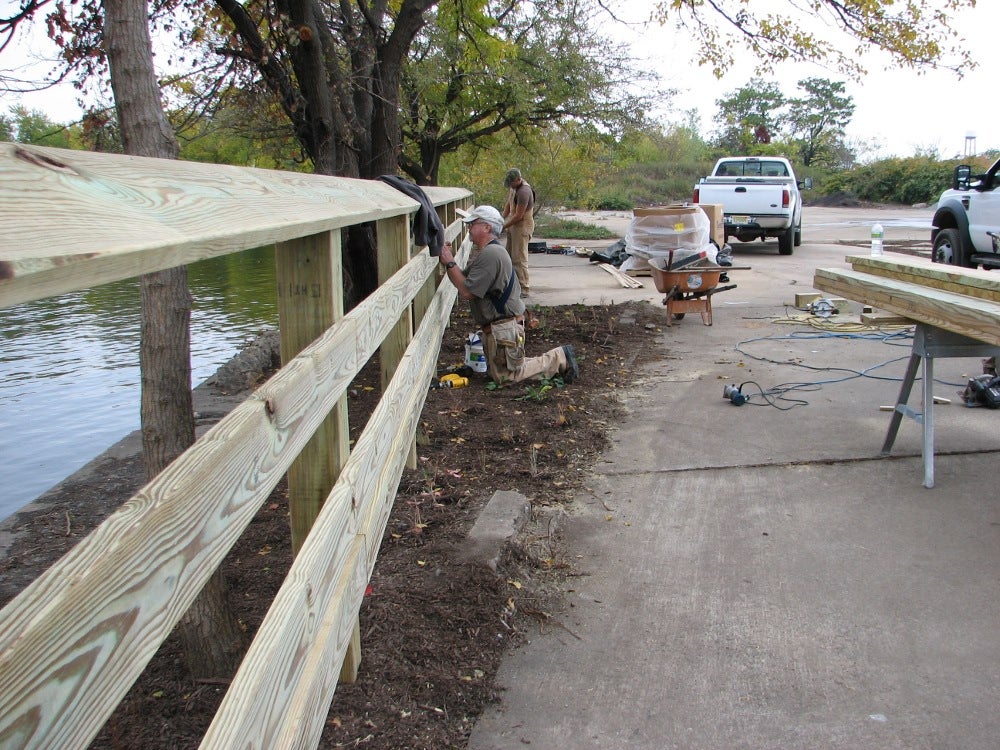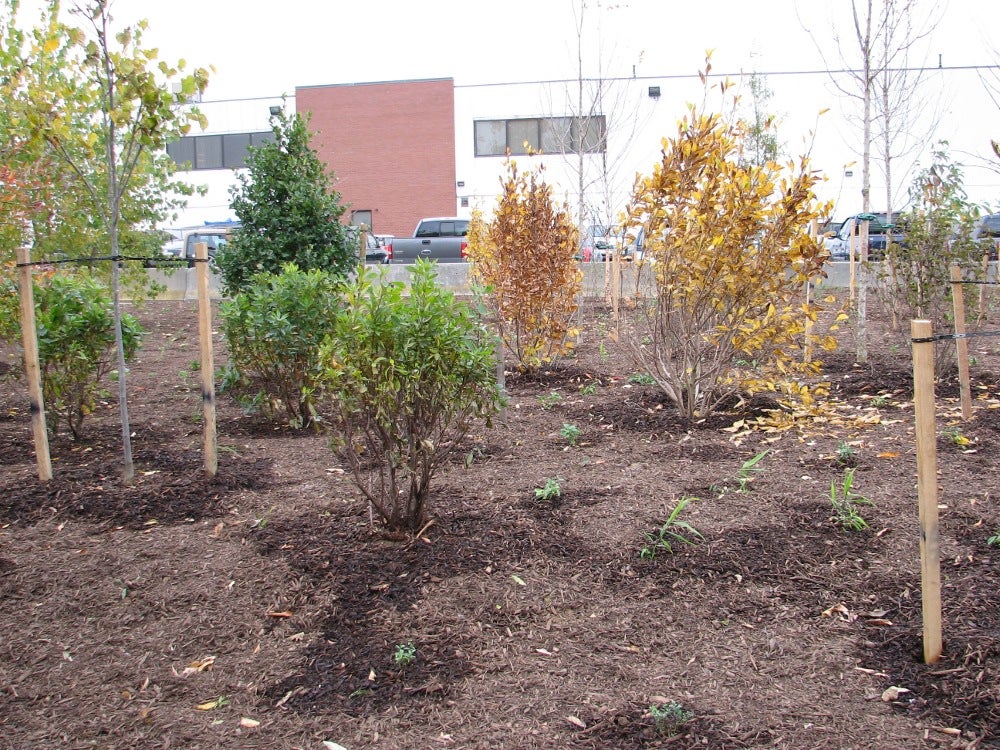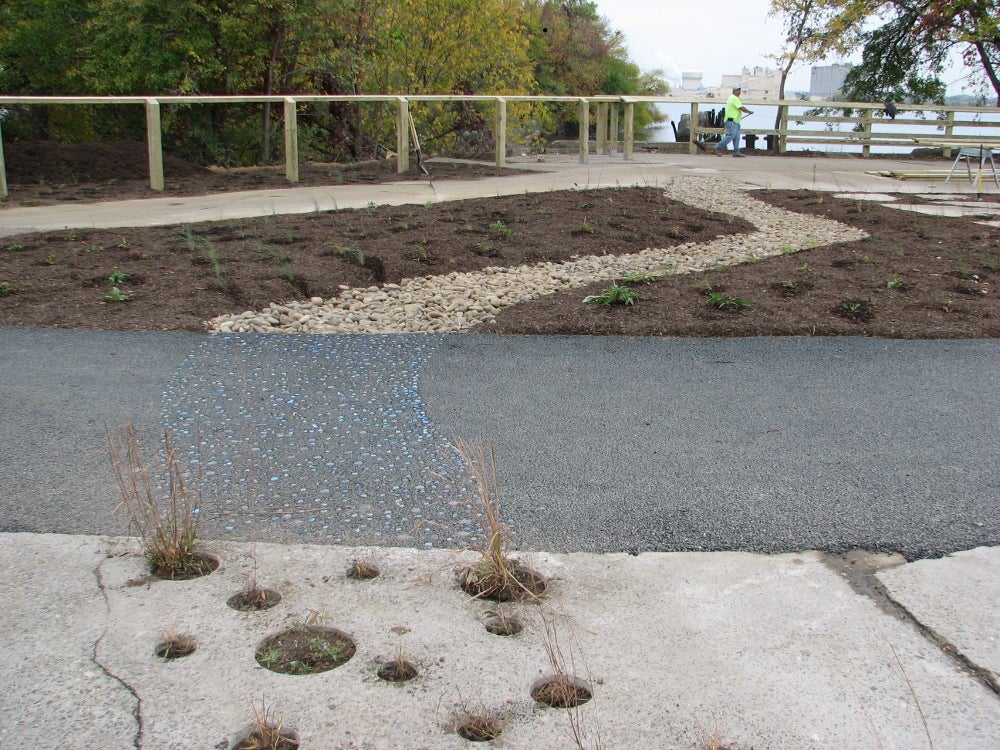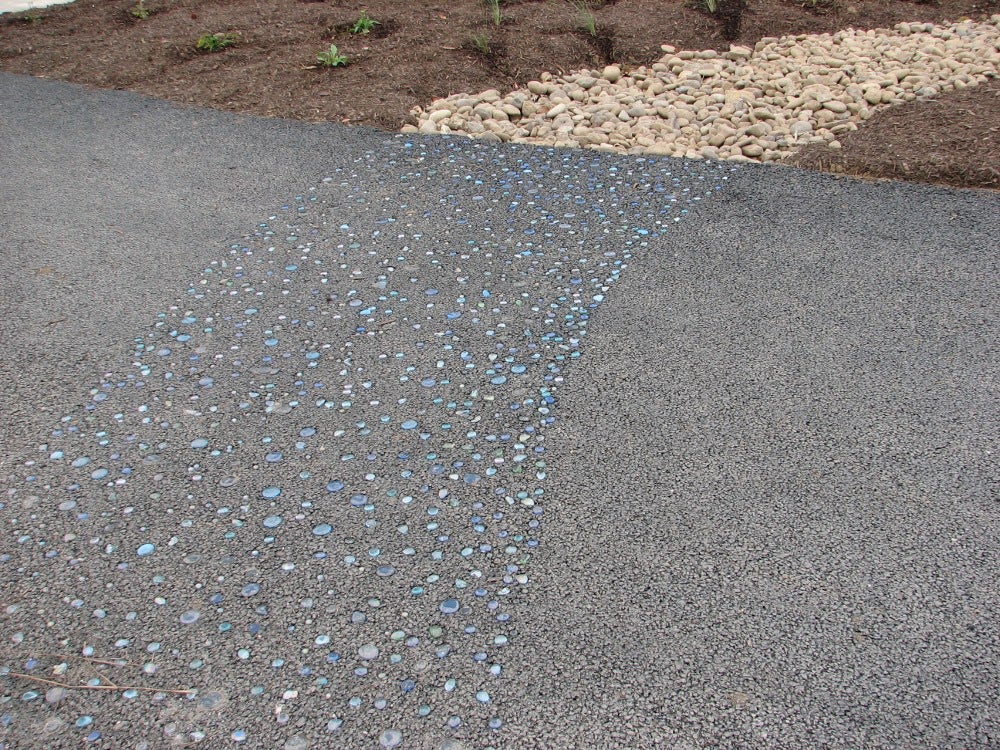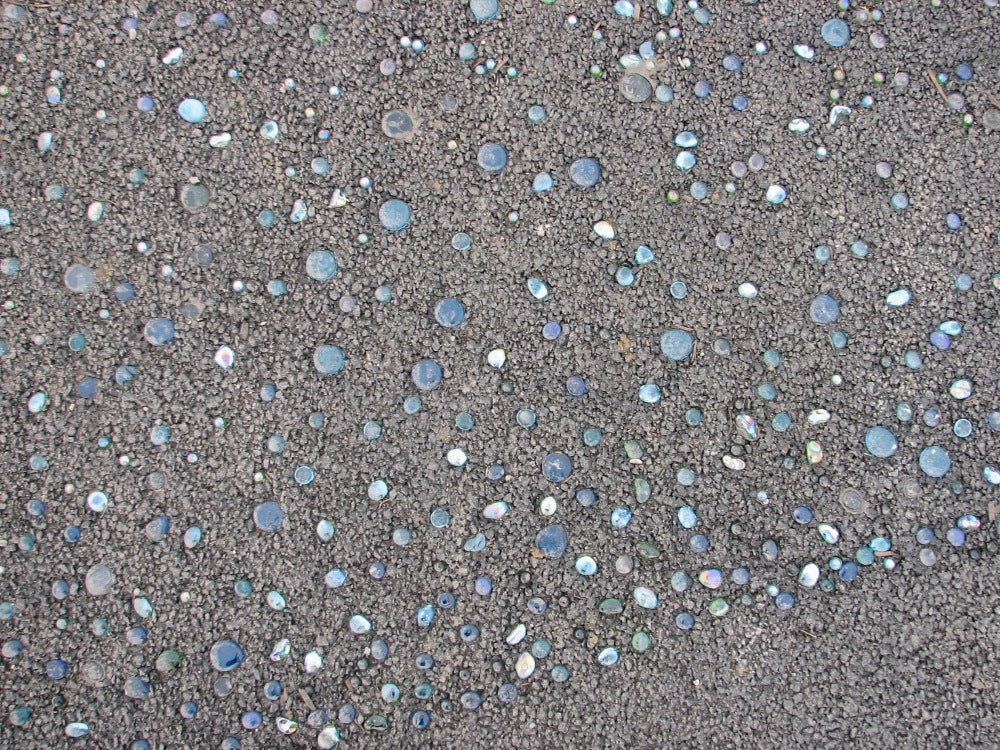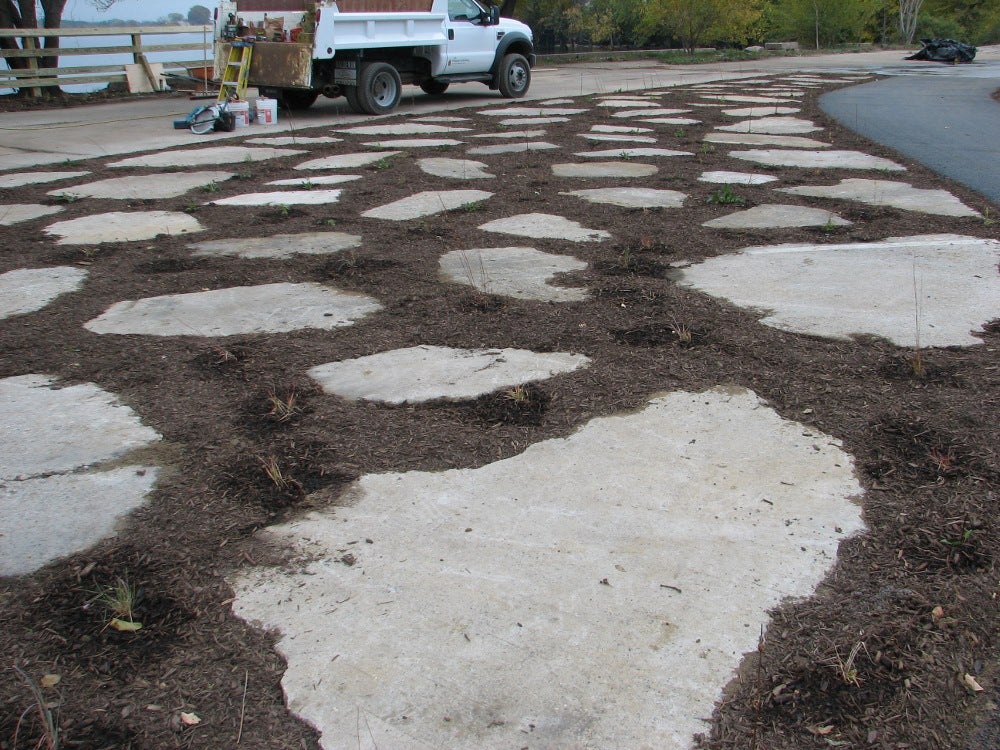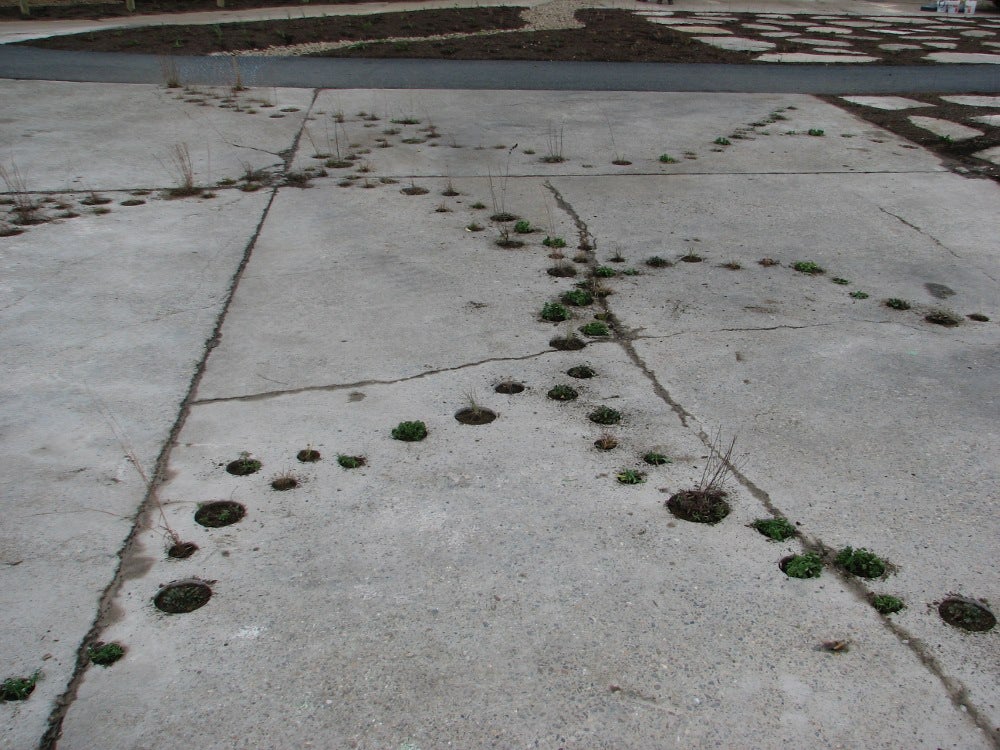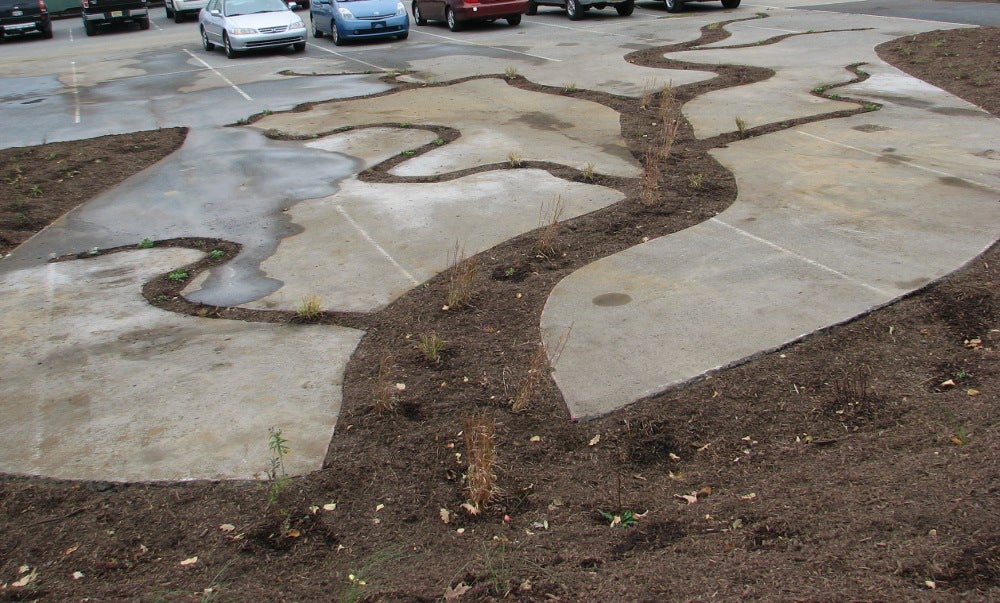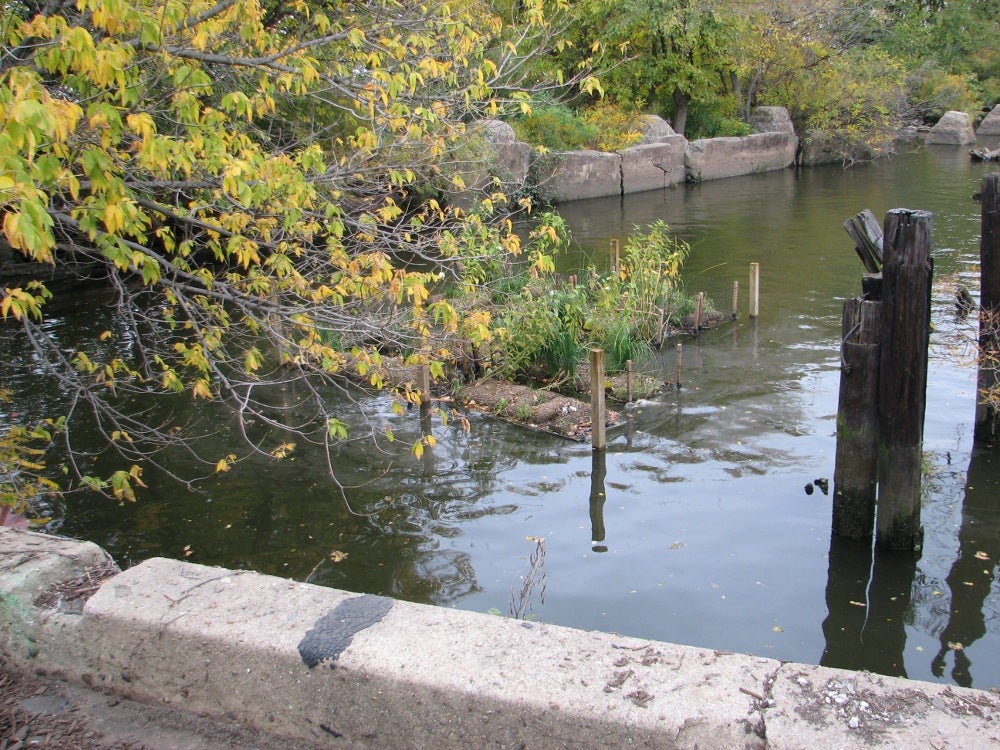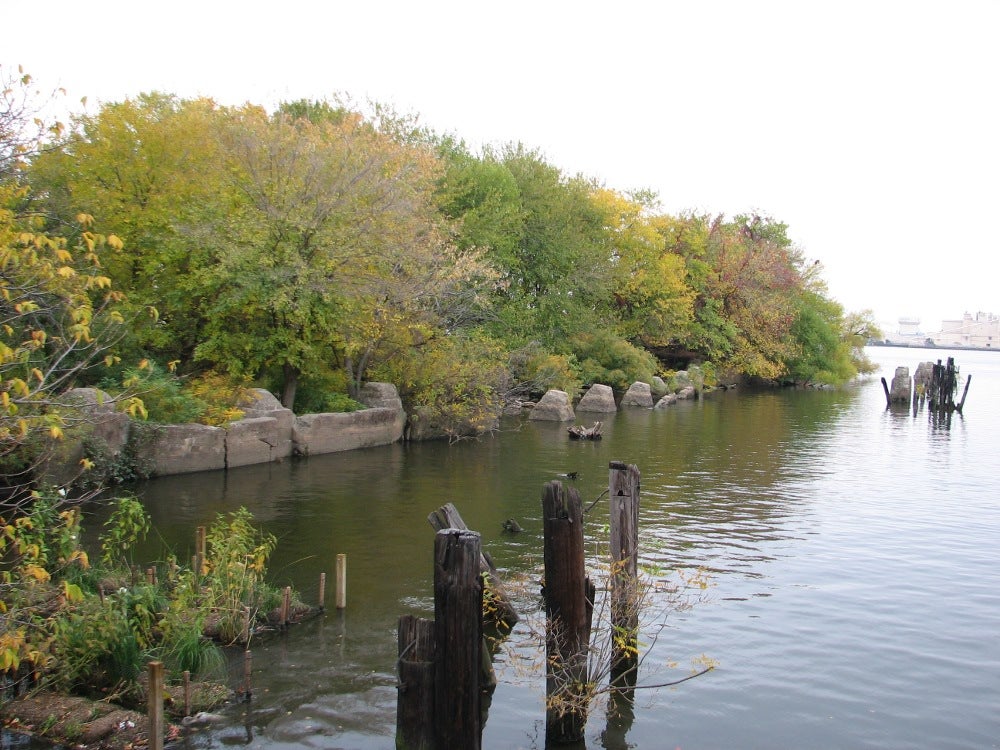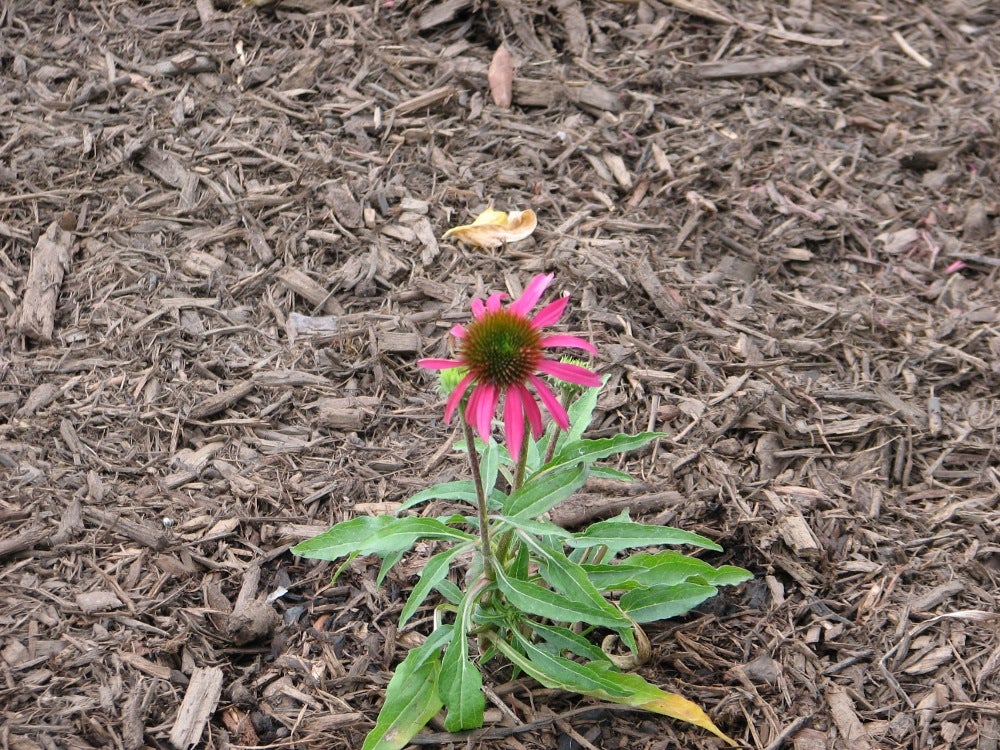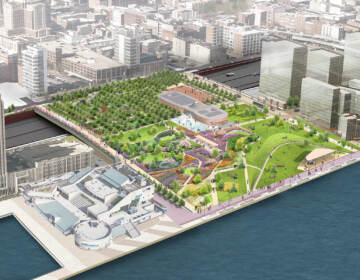Welcome to Washington Avenue Green
A former sea of asphalt at the foot of Pier 53 has given way to a one-acre collection of gardens and embryonic woodlands and meadows now called Washington Avenue Green.
The park was officially opened to the public during a late-morning ribbon cutting, where dignitaries praised the space not only for its beauty and the access to the waterfront it allows, but as one of the first steps in the city’s marathon goal of revitalizing the Central Delaware Waterfront.
“It’s a fantastic example of what you can do with willpower, cooperation, a former industrial site and a limited budget,” said Joe Forken, vice president of the Delaware River Waterfront Corporation, during a last minute check of the spot late Tuesday afternoon. The DRWC is the quasi-city agency that is overseeing the creation of a master plan to guide the decades-long revamping of the waterfront from Oregon to Allegheny Avenues.
The project was finished within its budget, which consists of a $500,000 grant from the William Penn Foundation, a $70,000 state Department of Conservation and Natural Resources grant given to the Philadelphia Water Department and a $30,000 federal Coastal Zone grant to the Pennsylvania Horticultural Society, which led the civic engagement for the project.
To put that $600,000 in perspective, it will cost about $4.5 million to build a more traditional civic space out of the Race Street Pier, also about an acre, Forken said. That park is expected to open this coming spring.
Washington Avenue Green is designed to be seem more natural than stylized.
Up until work started about a month ago, the entire area was a parking lot, covered with about six inches of concrete. Most of that concrete has been replaced with impervious surfaces and native plants that will help better manage rainwater. A picnic table and benches will go in one of the two spots that remains intact.
Washington Avenue Green is confined to the upland portion of the site. The pier itself, which is covered with large trees and brush, was not touched in this project.
The other large slab of concrete that remains is directly across from the pier. If a future project makes the pier into part of the park, the slab will become the access point, Biohabitats landscape architect Adam Ganser said. In the nearer future, it may serve as a base for large-scale artwork, he said.
Large square blocks made from some of the concrete that was removed has been stacked into a seating wall that overlooks one of two dendritic decay gardens, which are places where the concrete has been cut up, and grasses and flowers planted in those cracks and holes. Given enough time, the plants will further break apart the concrete.
Both of the decay gardens, and some other elements of the park, were designed by artist Stacy Levy.
The garden near the seating wall looks a bit like mini moon craters with plants inside. They are arranged to represent one of the Delaware’s tributaries that have been forced underground. The stream-like pattern continues to the black, permeable asphalt of the multi-purpose trail that winds through the park and will eventually tie into the East Coast Greenway. At the trail, the plant-filled craters give way to blue glass pebbles that even on a cloudy day suggested the glint of water. The symbolic stream continues past the trail in a fixed torrent of rock.
The second decay garden is easily viewed from the picnic area. The branching pattern of a river and its tributaries was cut into the pavement. The shape also suggests a tree.
The largest swaths of plantings are designed to mimic what one would find in a wild forest and meadow, Ganser said.
There are stands of large trees, including several varieties of oak, black gum and river birch. The bushes growing at the feet of these trees include viburnum, shad bush (so named because it flowers around the time the shad fish run and also called Juneberry or service berry) summer sweet and dogwoods. The bushes are met by meadows of native perennial grasses and flowers, such as little blue stem, purple love grass, echinacea, evening primrose, horsemint and aster.
These plants have mostly entered their dormant season, Ganser said. The tree leaves that remain attached are turning gold and brown. By this time next year, the trees, bushes and other plants will have grown considerably, he said, and that will continue.
“There will be a dense, full canopy within a few years,” he said. By both getting larger and self-seeding, the grasses and flowers that now dot a field of mulch will fill the space between them.
The multi-purpose trail winds through the green space at about its mid-point, but a separate branch runs over to the river. Benches will be placed there for anyone who wants to stop and watch the water, or look at the floating wetlands that were made by Philadelphians during a workshop.
The DRWC board has been careful to say that what was happening at Washington Avenue Green may not be permanent. But Forken yesterday clarified that while the future may bring changes, the space would remain a public park. “Whatever this space winds up as, it will always be an open, public spot for recreation,” he said.
Reach the reporter at kgates@planphilly.com.
WHYY is your source for fact-based, in-depth journalism and information. As a nonprofit organization, we rely on financial support from readers like you. Please give today.



